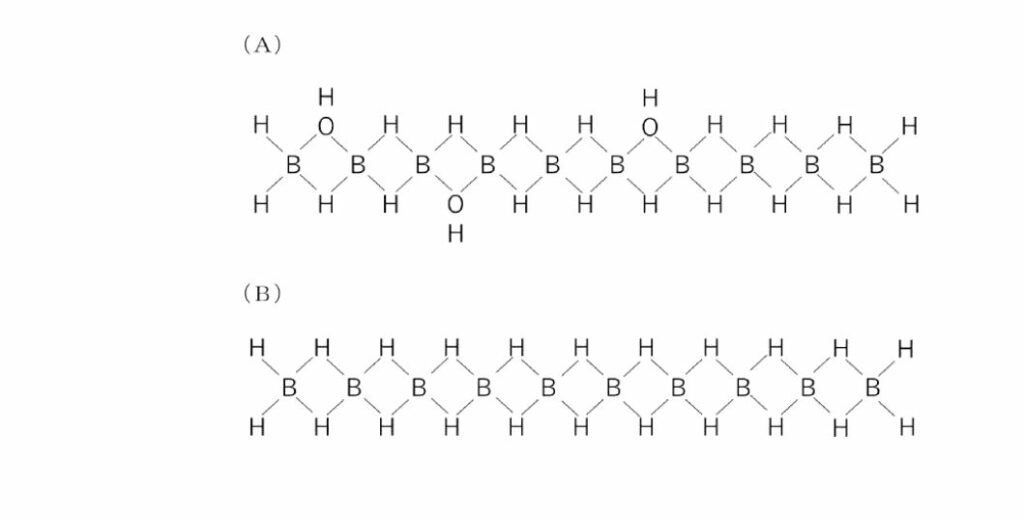The Tokyo Institute of Technology has recently secured a patent for a groundbreaking method for enhancing hydrogen storage and transportation. This patent addresses the pivotal need for efficient and safe hydrogen management, a barrier to the wider adoption of hydrogen as a clean energy source.
The patented technology revolves around a boron, hydrogen, and oxygen structure characterized by B—H—B, B—H, and B—OH bonds. The innovation leverages these bonds in a unique configuration, ensured by specific transmittance values in Fourier-transform infrared spectroscopy (FT-IR). The formulas specifying these transmittance values are:
1. \( 0.80 \leq \frac{a}{c} \leq 0.96 \)
2. \( 0.95 \leq \frac{b}{c} \leq 1.12 \)
Here, ‘a’, ‘b,’ and ‘c’ refer to the transmittance at 1400 cm−1, 2500 cm−1, and 3200 cm−1, respectively, when the baseline is 100%.
Applications
This patented method has significant potential applications in the hydrogen economy, specifically in:
1. Hydrogen Fuel Cells: Enhancing fuel cells’ storage and transport capabilities could make them more viable for use in electric vehicles and portable power systems.
2. Industrial Hydrogen: Facilitating efficient and safe transportation of industrial hydrogen for manufacturing processes.
3. Renewable Energy Integration: Supporting large-scale hydrogen storage systems for integrating renewable energy sources like wind and solar power.
The introduction of this patented technology could substantially impact the hydrogen market by:
– Reducing Costs: More efficient storage means reduced transportation and storage infrastructure costs.
– Safety Enhancements: Improved handling methods decrease risks associated with hydrogen transport, appealing to wider commercial and industrial use.
Market Penetration: These advancements could expedite the adoption of hydrogen technologies in sectors that previously considered them impractical due to storage and transportation concerns.
Compared to existing hydrogen storage solutions, such as compressed gas and liquid hydrogen, this new method offers:
– Higher Density: The unique chemical bonding assures higher hydrogen density, possibly reducing the space required for storage.
– Improved Stability: Incorporating boron and specific bonding strategies enhances the material’s stability.
– Better Efficiency: The specific FT-IR characteristics ensure that the materials involved are optimized for their role, which contrasts with current methods that often lack such precision.
The core of the patented technology is its reliance on precise chemical interactions and spectroscopic properties:
– Material Composition: A specific mixture of boron, hydrogen, and oxygen to form B—H—B, B—H, and B—OH bonds.
Spectroscopic Validation: FT-IR spectra are used to ensure the right configurations and properties are achieved, establishing a new standard for evaluating hydrogen storage materials.
– Transmittance Ratios: Ensuring the critical values for ‘a’, ‘b’, and ‘c’ to achieve the optimal storage characteristics.
The Tokyo Institute of Technology’s patented hydrogen storage and transportation method presents a promising step forward in the hydrogen economy. By focusing on a specialized structure comprising boron, hydrogen, and oxygen and validated through FT-IR spectroscopy, this innovation can potentially enhance storage density, stability, and overall efficiency. This patent represents a promising advancement that could make hydrogen a more viable and accessible energy source across various industries and applications.
